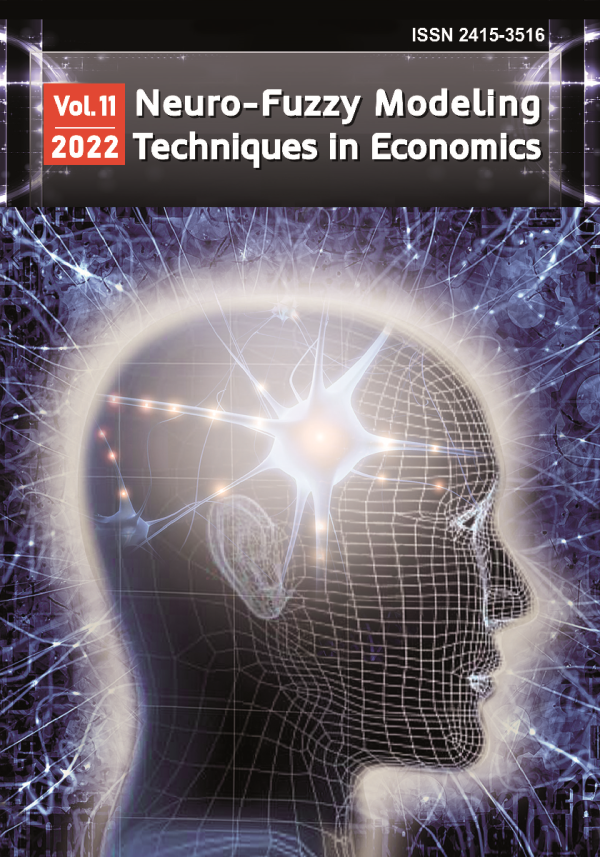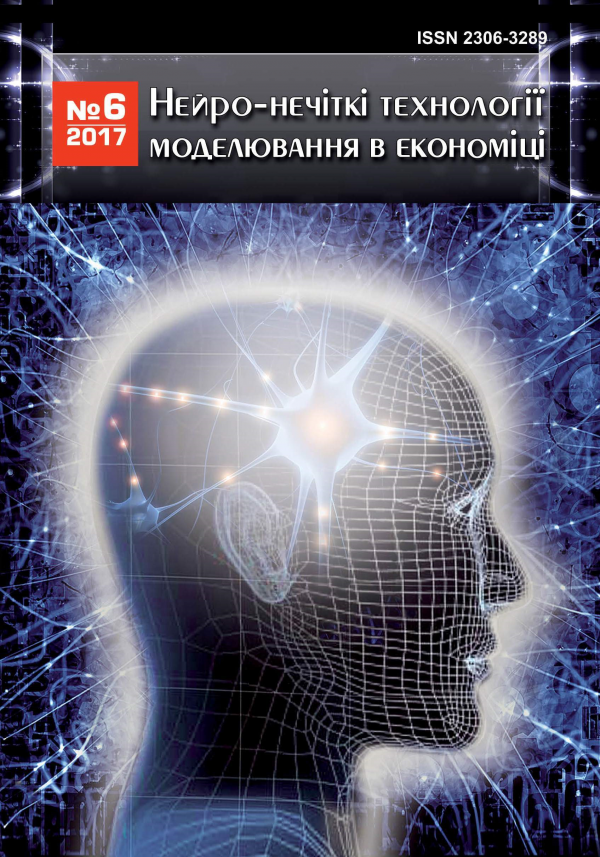
Neuro-Fuzzy Modeling Techniques in Economics
ISSN 2415-3516
Застосування математичних моделей для голосової ідентифікації суб’єктів у сфері фінансової безпеки
Application of mathematical models for voice identification in the field of financial security
DOI:
10.33111/nfmte.2017.158
Анотація: У статті проведено дослідження з вибору найефективніших математичних методів та оптимальних комбінацій параметрів попередньої обробки даних у вирішенні завдань біометричної ідентифікації. Досліджено етапи підготовки даних, поданих у вигляді часових рядів, для завдань розпізнавання образів. Встановлено ознаки потоку даних, які можуть бути використані як вхідні параметри для побудови моделі класифікації. Проведено порівняльний аналіз точності моделей класифікації, побудованих з використанням штучних нейронних мереж, комітетів дерев прийняття рішень та алгоритму опорних векторів, а також порівняння показників витрат комп’ютерного часу на побудову таких моделей. Для зменшення витрат часу для пошуку гіперпараметрів запропоновано застосовувати двоетапний підхід зі скороченням розміру навчальної вибірки та залученням спрощених математичних методів на попередньому етапі пошуку. Проведена експериментальна перевірка підтвердила доцільність застосування такого підходу в процесі оптимізації параметрів підготовки даних і конфігурації нейронної мережі та засвідчила його ефективність з точки зору витрат комп’ютерного часу. Висновки з проведеного дослідження та побудовані моделі можуть бути використані банківськими структурами та іншими установами, зацікавленими в біометричній ідентифікації особи за голосом.
Abstract: The article is devoted to choosing the most effective mathematical methods and optimal parameters combinations on data preparation and modeling in solving the problems of biometric identification.
Stages of the time series data transformation into the form, applicable for pattern recognition tasks, are discovered. The components of the data flow that can be used as input parameters for building a classification model are developed. A comparative analysis of the accuracy of classification models built using artificial neural networks, decision trees committees and support vector algorithm is performed. It’s given the comparison of the cost of computer time to build such models. To reduce the computational cost of searching for hyperparameters there proposed to use two-phased approach on reducing the size of the training sample and simplifying mathematical methods in the preliminary step of search. Experimental testing confirmed the applicability of the approach to optimize the parameters of the data and configuration of the neural network and its efficiency in terms of cost of computer time. Findings from the research and the built models may be used by banking institutions and other organizations interested in biometric identification by voice
Ключові слова: Біометрична ідентифікація, нейромережа, комітети дерев прийняття рішень, оптимізація гіперпараметрів, витрати процесорного часу.
Key words: Biometric identification, neural network, Random forest method, hyper-parameters optimization, computational costs
УДК: 330.46:519.71
UDC: 330.46:519.71
JEL: C45 C61 C89
To cite paper
In APA style
Shcherbakov, Y. (2017). Application of mathematical models for voice identification in the field of financial security. Neuro-Fuzzy Modeling Techniques in Economics, 6, 158-190. http://doi.org/10.33111/nfmte.2017.158
In MON style
Щербаков Є. Застосування математичних моделей для голосової ідентифікації суб’єктів у сфері фінансової безпеки. Нейро-нечіткі технології моделювання в економіці. 2017. № 6. С. 158-190. http://doi.org/10.33111/nfmte.2017.158 (дата звернення: 29.10.2024).
With transliteration
Shcherbakov, Y. (2017) Zastosuvannia matematychnykh modelei dlia holosovoi identyfikatsii sub’iektiv u sferi finansovoi bezpeky [Application of mathematical models for voice identification in the field of financial security]. Neuro-Fuzzy Modeling Techniques in Economics, no. 6. pp. 158-190. http://doi.org/10.33111/nfmte.2017.158 [in Ukrainian] (accessed 29 Oct 2024).
 # 6 / 2017
# 6 / 2017
Download Paper
154
Views
48
Downloads
0
Cited by

